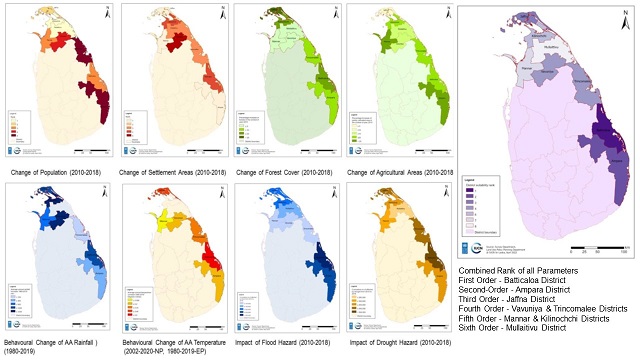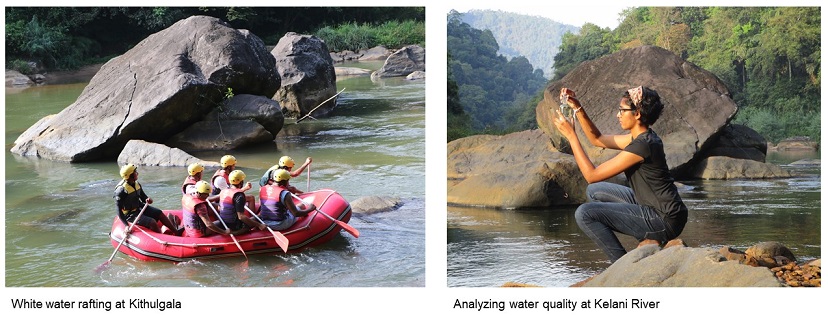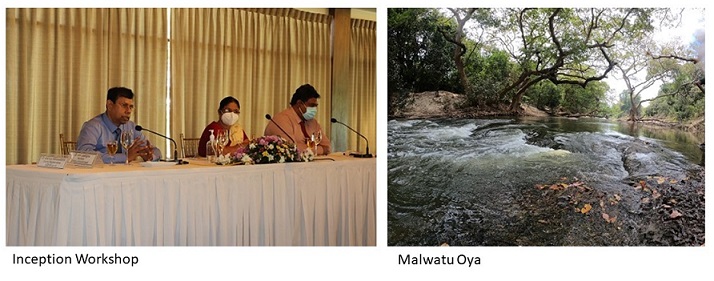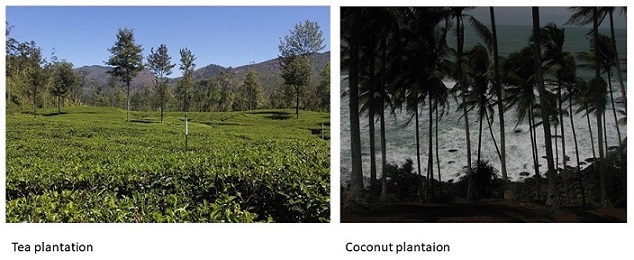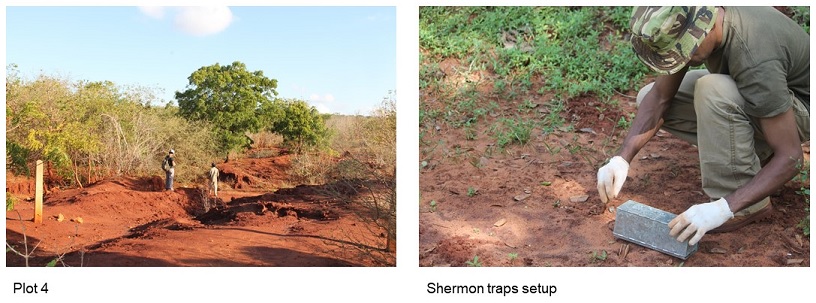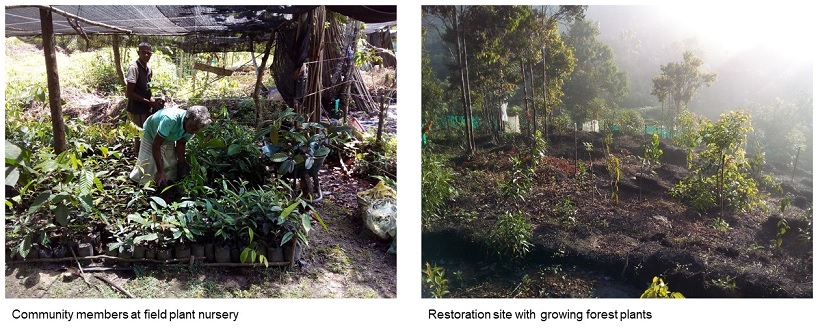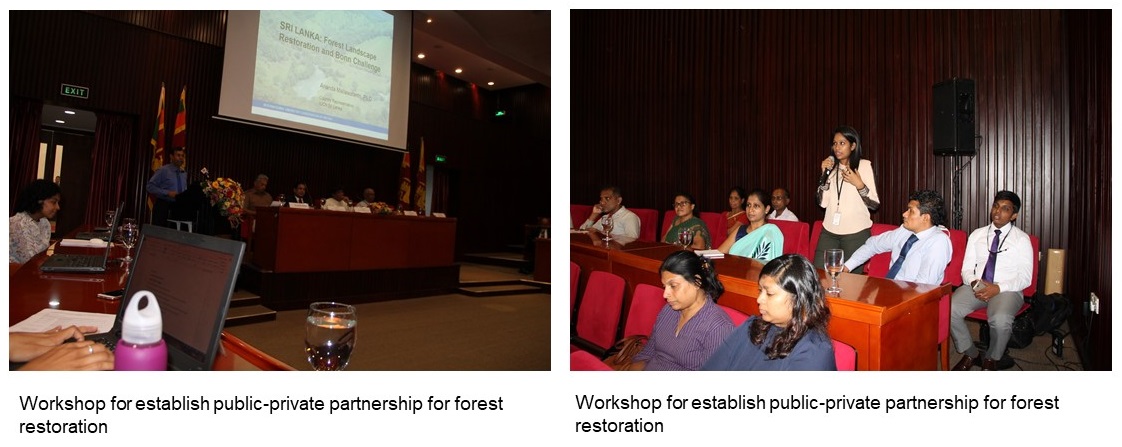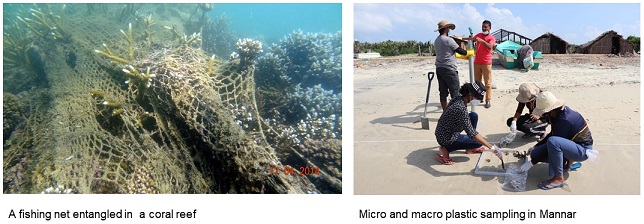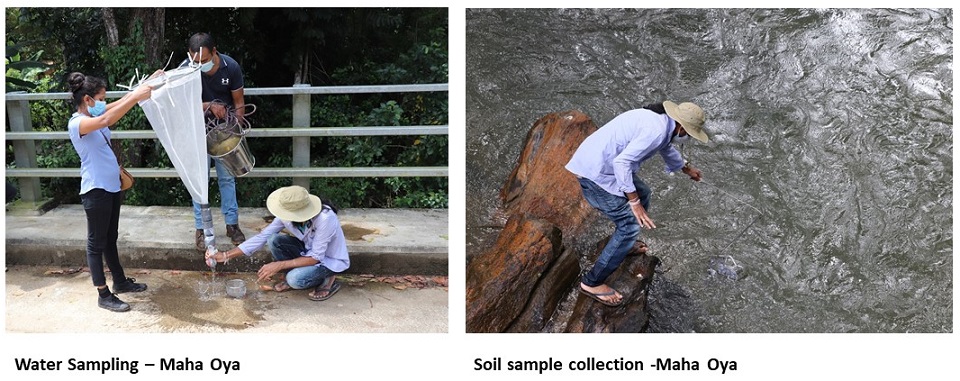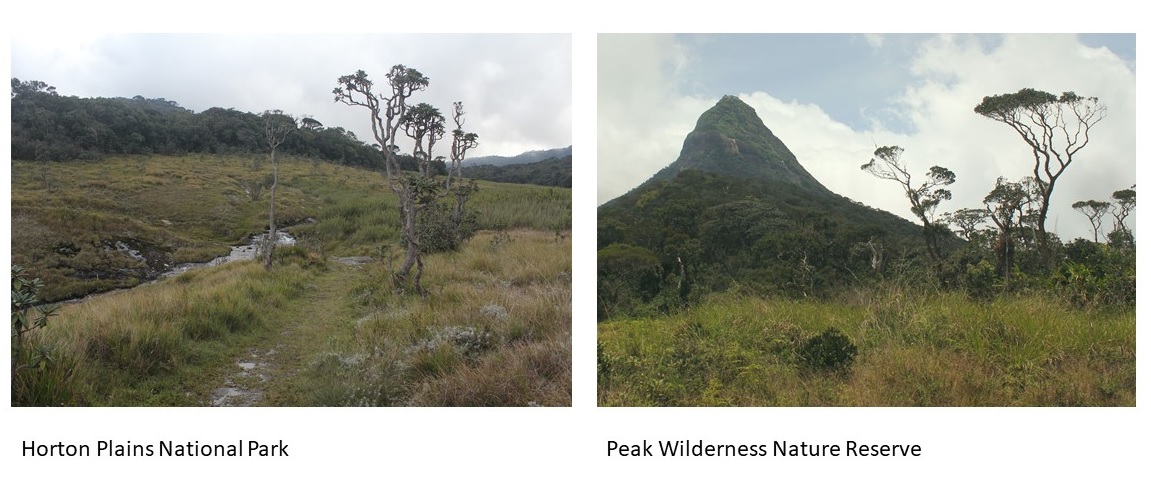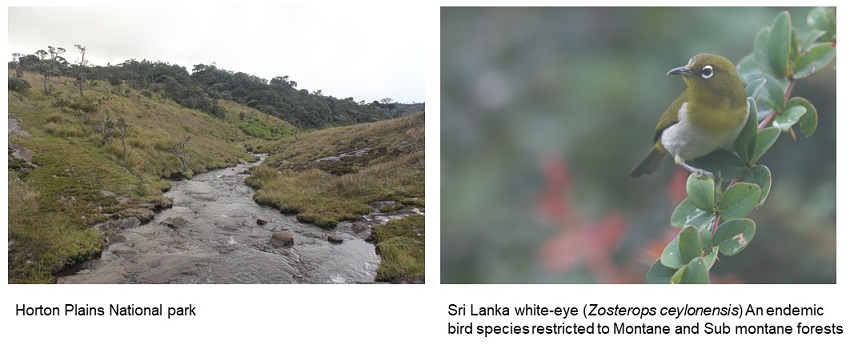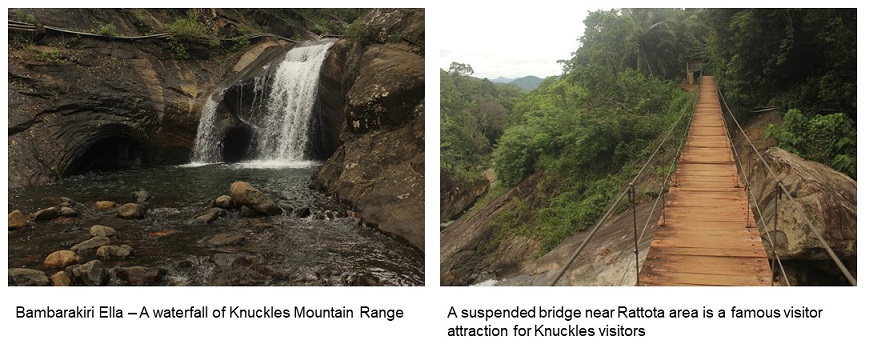Biodiversity
Past Projects
Long Term Conservation of Red Fin Labeo (Labeo lankae), Globally Critically Endangered Fish Species
Red Fin Labeo (Labeo lankae), endemic to Sri Lanka is currently classified as a Critically Endangered (CR) species due to its limited distribution. According to previous studies, it had been widely distributed within the dry zone of Sri Lanka. However, recent studies provided evidence of their existence, now restricted to mid and lower Malwathu Oya Basin in the North Central dry zone. There is however an information gap on their populations, habitat, distribution, threats and also the impact caused by climate change on their existence. This study focuses on executing a full investigation of the species and their habitats, along the Malwatu Oya Basin.
 Labeo Lankae (left) and habitat (right)
Photo: Sampath Goonatilake / IUCN
Labeo Lankae (left) and habitat (right)
Photo: Sampath Goonatilake / IUCN
Ecological Survey and Priority Species Translocation in the Ecologically Sensitive Areas of North Western Province Canal Project (NWPCP)
The North Western Province Canal Project (NWPCP) implemented by the Government of Sri Lanka with funding from the Asian Development Bank involves a trans-basin diversion of water from the Mahaweli River to Hakwatuna Oya and Upper Mi Oya basins. The project will have significant short and long-term environmental impacts. The Wildlife Management Plan including Human-Elephant Conflict Management and Mitigation for the North Western Province Canal Project (NWPCP) has also recommended the rescue and translocation of selected prioritized species from the forest clearance site due to the project activities. Carrying out this task - rescue and translocation - was thus assigned to the IUCN Sri Lanka country office.
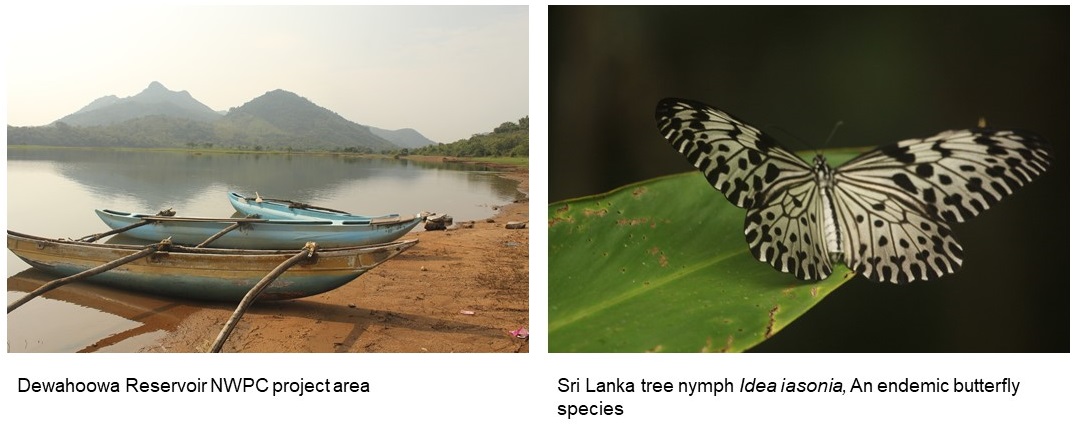 Dewahoowa Reservoir (left) & Sri Lanka tree nymph, Idea iasonia, an endemic butterfly species (right)
Photo: Naalin Perera / IUCN
Dewahoowa Reservoir (left) & Sri Lanka tree nymph, Idea iasonia, an endemic butterfly species (right)
Photo: Naalin Perera / IUCN
Designing Communication and Outreach Resources for the "Enhancing Biodiversity Conservation and Sustenance of Ecosystems Services in Environmentally Sensitive Areas" project including Reviewing the Existing Communication Strategy
"Enhancing Biodiversity Conservation and Sustenance of Ecosystems Services in Environmentally Sensitive Areas" is a Global Environment Facility (GEF) fifth programme cycle project implemented by the Ministry of Mahaweli Development and Environment (MMD&E) and the UNDP. IUCN is closely working with the ESA Project implementing team to develop communication and outreach resources for the project area in order to facilitate project activity implementation, as well as to obtain stakeholder support to popularize the ESA concept.
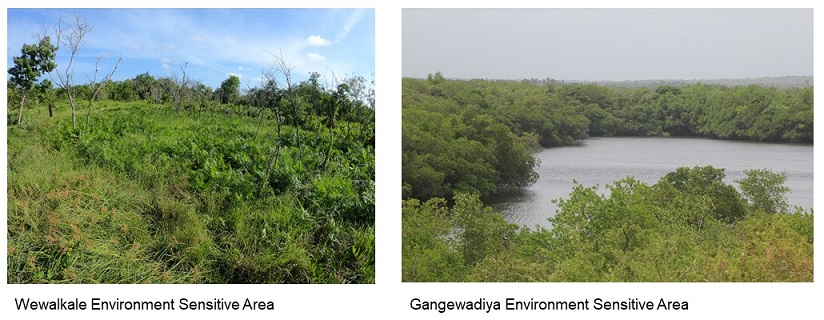 Wewalkele ESA (left) Gangewadiya ESA (right)
Photo: Naalin Perera / IUCN
Wewalkele ESA (left) Gangewadiya ESA (right)
Photo: Naalin Perera / IUCN
Labeo fisheri conservation and update of IUCN Red List endemic freshwater fish species
The 30-MW Moragolla Hydropower Plant proposed by Ceylon Electricity Board (CEB) was approved by Central Environmental Authority after evaluating the proposal under EIA regulations with specific mitigation measures. As part of the ADB environmental safeguards, fish surveys were undertaken on behalf of CEB in 2016-2017 by National Aquatic Resources Research and Development Agency (NARA) which identified Labeo fisheri being present in the dam site area. As the project may have a direct impact on the critical habitat of Labeo fisheri, ADB required a critical habitat assessment to be conducted. Therefore, the project reassessed the conservation status of the Labeo fisheri and evaluated the endemic fresh water fishes of Sri Lanka for IUCN Red Listing.
IUCN Sri Lanka has launched the Marine Turtle Conservation and Enhancement Project, funded by the Anantara Peace Haven Tangalle Resort in Sri Lanka, which is also an implementing partner. The project, conducted in collaboration with the Department of Wildlife Conservation (DWC), the focus is on four key areas: raising awareness, preserving turtle nesting habitats, enhancing coastal habitat within the hotel grounds, and assisting with turtle conservation efforts led by the Department of Wildlife Conservation.
The resort's location, surrounded by diverse marine and coastal habitats, offers a unique opportunity for successful conservation activities. The beachfront of the property, a small estuary within the hotel, and the hotel's location within a human-modified landscape, present opportunities for conservation and sustainability initiatives. Out of the seven species of marine turtles recorded around the world, five visit South Asian shores, including Sri Lanka, for the purpose of nesting, often on the beachfront of hotel properties. This presents a significant opportunity for turtle conservation and raising awareness. The project aims to identify and protect nesting sites along the hotel's beachfront.
Additionally, a complete biodiversity survey will be conducted within the property to enhance ecosystem services provided by the estuary and rehabilitate the landscape by reintroducing native plant species, creating a natural coastal habitat that attracts native species. Nature trails within the premises will also be identified to promote awareness of Sri Lankan flora and fauna among visitors.
The project includes awareness sessions for hotel staff on the value of Sri Lankan biodiversity, turtle conservation, coastal biodiversity, and conservation engagements. It also aims to enhance the field-level capacity of the DWC and establish an interpretation center at Rakawa Turtle Sanctuary.
Furthermore, IUCN will conduct a survey of turtle nesting habitats and threats along the 132 km coastline from Tangalle (Anantara Hotel) to Yala National Park (Kumbukkan Oya estuary) in collaboration with DWC. The findings will be compared with the 2004 IUCN turtle habitat survey data to identify any changes or threats to habitats, and the findings will be shared with DWC.
Finally, the project will support the establishment of a “Dollars for Deeds” program for Anantara as a financing mechanism to fund conservation activities in Sri Lanka.
Integrated Strategic Environment Assessment for the Northern Province of Sri Lanka (ISEA-North): Lessons learned
In 2009, UNEP and UNDP supported Sri Lanka to carry out the ‘Integrated strategic environment assessment for the northern province (ISEA-North). The objective of ISEA-North was to ensure that the resettlement and new development activities in the Northern Region are sustainable and cause minimum damage to natural resources. After six years, UNEP and IUCN Sri Lanka are collaborating on an effort to document the ISEA-North process and experience in detail, so that the lessons learned can be used locally and globally.
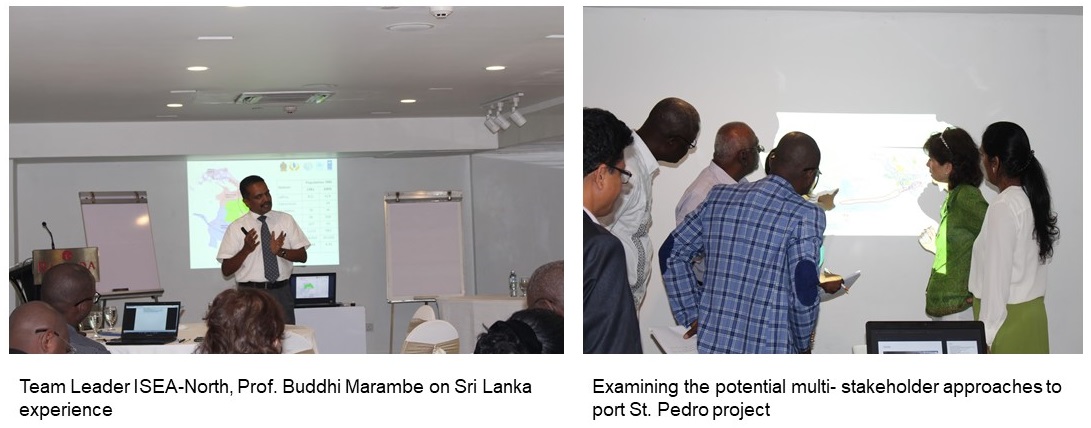 Team Leader (left) & examine the potential multi-stakeholder approaches
Photo: IUCN
Team Leader (left) & examine the potential multi-stakeholder approaches
Photo: IUCN
Preparation of Sri Lanka’s National Biodiversity Strategy and Action Plan (NBSAP) for 2016-2022
Sri Lanka ratified the UN Convention on Biological Diversity (CBD) in 1994. Article 6 of the CBD requires contracting parties to develop a National Biodiversity Strategy and Action Plan (NBSAP), or an equivalent instrument. After conducting a series of stakeholder-driven, consultative and participatory workshops and information sharing sessions, IUCN proposed a draft NBSAP which was revised and finalised upon receiving stakeholder inputs. National-level stakeholders from the In-situ and Ex-situ biodiversity conservation sector, food and nutrition sector, climate change and development sector and coastal and marine sector were engaged along with the Biodiversity Expert Committee, appointed by the Biodiversity Secretariat.
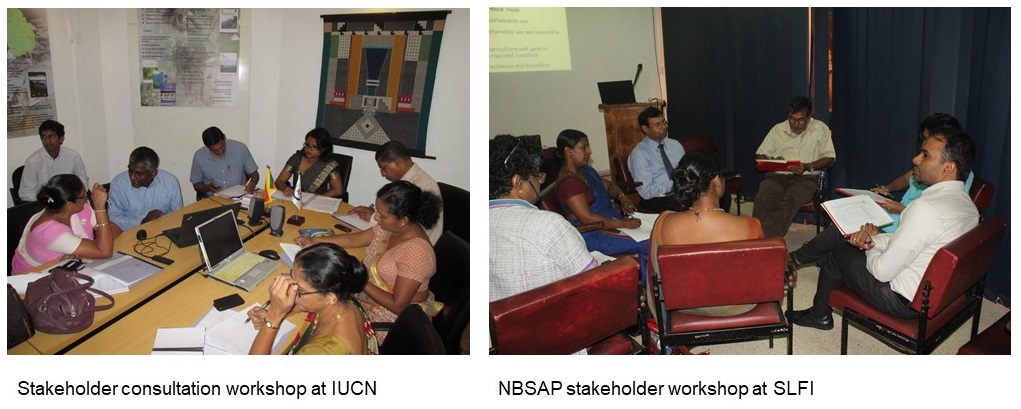 Stakeholder consultation meeting at IUCN (left) & NBSAP stakeholder workshop at SLFI (right)
Photo: Naalin Perera / IUCN
Stakeholder consultation meeting at IUCN (left) & NBSAP stakeholder workshop at SLFI (right)
Photo: Naalin Perera / IUCN
Watershed conservation and restoration in the Knuckles Conservation Forest and Environmental Protection Area: mini-watershed of Puwakpitiya Oya
The Knuckles Conservation Forest in Sri Lanka was declared a Conservation Forest in 2000. It is also one of three sections of the Central Highlands World Heritage Site. The project aims to conserve biodiversity, maintain watershed services and increase resilience to climate change for the benefit of local communities, agriculture and the local economy of both the Puwakpitiya mini-watershed and of the wider watershed area.
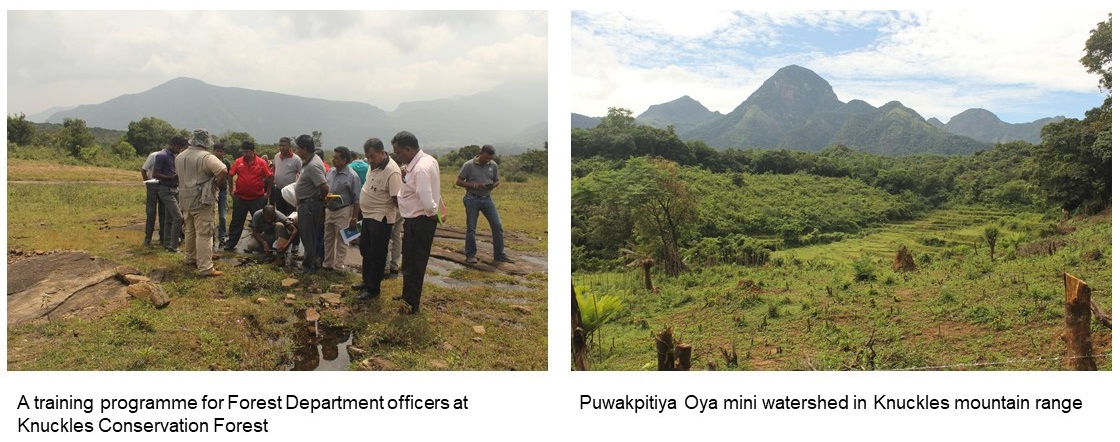 A training programme (left) & Puwakpitiya Oya mini watershed (right)
Photo: Naalin Perera / IUCN
A training programme (left) & Puwakpitiya Oya mini watershed (right)
Photo: Naalin Perera / IUCN
Conservation of Two Globally and Nationally Endangered (EN) Dragonfly Species [Rivulet Tiger (Gomphidia pearsoni), and Wijaya's Scissortail (Microgomphus wijaya)] by Enhancing the Watershed of Hunuwela Estate, Kahawatta Plantation PLC, Dilmah Group
IUCN developed a management plan for the natural areas that lie within the Hunuwela Estate, aiming to improve the overall ecological integrity and watershed ecosystem services of the property. Through the project activities, it is possible to work towards conserving these Endangered (EN) dragonfly species and their habitat. The project also recommended further conservation action required to preserve the threatened biodiversity and watershed functions of the estate. This conservation initiative provides an ideal opportunity for the development of a model conservation programme that can be emulated and replicated by other like-minded plantations and estates.
Assessing the status of the biodiversity of the rainwater harvesting systems of Heladhanavi Power Plant and its surroundings
In late 2014, IUCN Sri Lanka office was engaged by Lanka Transformers Limited (LTL) to assess the status of the biodiversity surrounding the rainwater harvesting systems of the abandoned Heladhanavi Power Plant (HPP) premises in the Puttalam district.
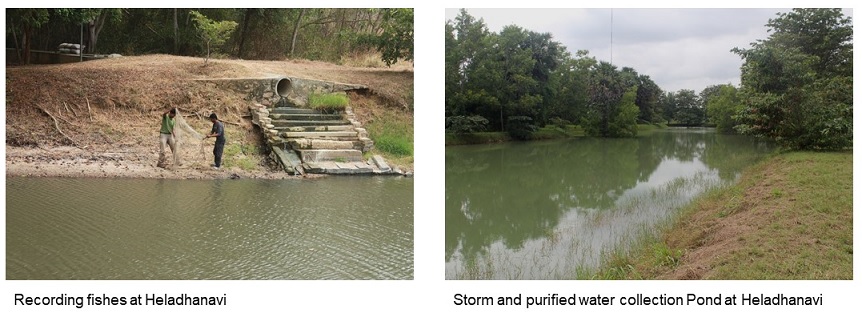 Recording fishes at Heladanavi & storm and purified water collection pond at Heladanavi
Photo: Tiran Abayawardane (left) and IUCN / Naalin Perera (right)
Recording fishes at Heladanavi & storm and purified water collection pond at Heladanavi
Photo: Tiran Abayawardane (left) and IUCN / Naalin Perera (right)
Bandula Barb conservation project
The Bandula barb (Pethia bandula) is a Critically Endangered and point endemic species. This means that it can only be found in a 1.5 km long stream that flows through Galapitamada, Sri Lanka. Unlike other Rare and Critically Endangered species, Bandula Barb lives outside the protected area network of Sri Lanka. In 2013, IUCN initiated a project to implement the Bandula Barb Conservation Action Plan. IUCN worked closely with the Department of Wildlife Conservation, Forest Department and Divisional Secretariat of Warakapola and the local community to implement project activities.
Implementation of the biodiversity action plan of the Moragahakanda agricultural development project and the Kalu Ganga Reservoir and agricultural extension project
Sri Lanka’s Moragahakanda agriculture project was designed to harvest water from Amban Ganga and Kalu Ganga, two tributaries of Mahaweli Ganga, with the construction of two reservoirs. It resulted in the establishment of two new settlements – the right bank and left bank settlements as well as the development of a road network and other necessary facilities. Upon the request of the Mahaweli Authority of Sri Lanka (MASL), IUCN designed and implemented a biodiversity action plan to assess and address the impacts of the project on biodiversity.
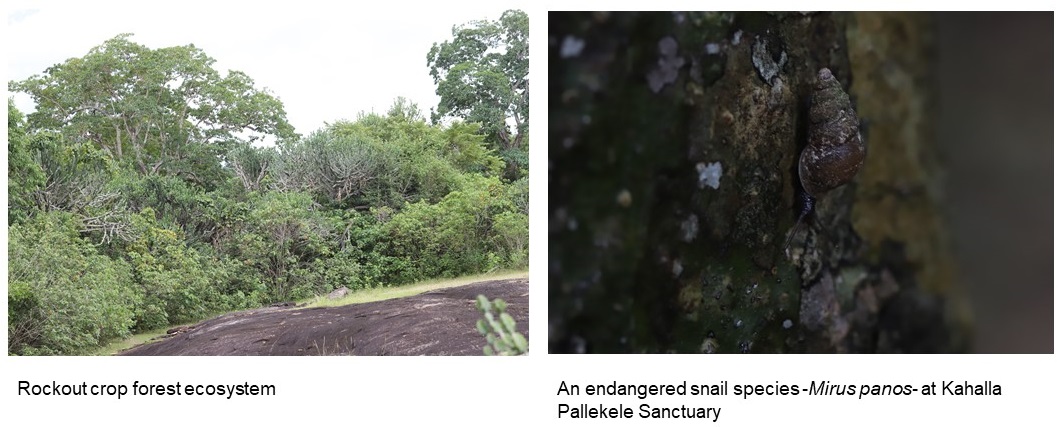 Rock out crop forest ecosystem (left) & An endangered snail species, Mirus panos at Kahalla Pallekele Sanctuary (right)
Photo: Naalin Perera / IUCN
Rock out crop forest ecosystem (left) & An endangered snail species, Mirus panos at Kahalla Pallekele Sanctuary (right)
Photo: Naalin Perera / IUCN


